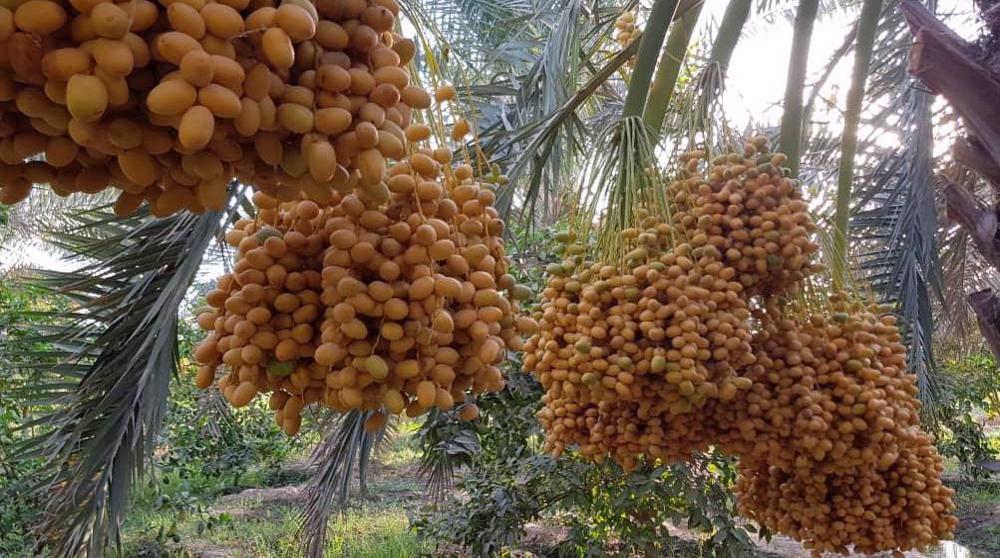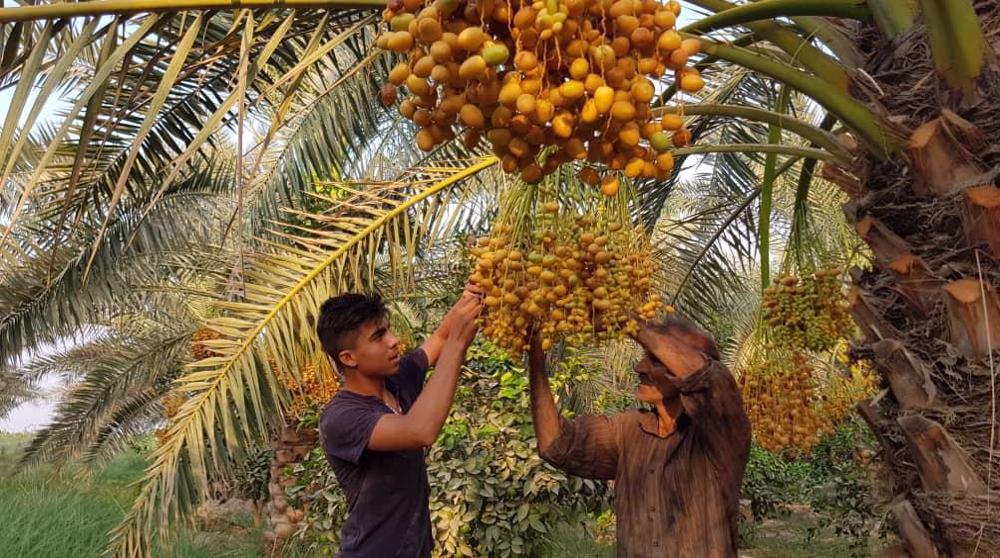Iran exports dates to over 85 countries despite sanctions
Iran exports dates to more than 85 countries, including in Europe, despite the cruel sanctions which affect most sectors of the economy, chairman of the agricultural committee of Iran Chamber of Cooperatives says.
According to Arsalan Qassemi, Iran's date export is global, thanks to the quality and production of different varieties of the sweet fruit in the country.
“Iran occupies the first place in the world in terms of the number of date varieties, which is due to the diversity of climates in this region,” he told Tasnim news agency.
Medjool dates, chiefly grown in southeastern Kerman and Sistan and Baluchestan, are the most suitable for export. With their deep amber-brown color and crinkly skin, Medjool dates are one of the most popular, known for their large size, soft texture and rich flavor.
However, the most coveted and cultivated dates in the domestic market are Kabkab and Mozafati varieties.
Qassemi said most dates are consumed inside the countries that produce them. For example, Iran exported 320,000 tonnes of dates last year, and the rest of the product estimated at around 1.1 million tonnes was consumed domestically.
The main target markets of Iran for exporting dates are Pakistan, India, Afghanistan, Turkey and the UAE.
“Consuming dates has many benefits for the human body. In other words, 100 grams of dates meet 20% of a person's daily need for potassium,” he said.
“The date has two grams of protein and several types of antioxidants. It is a good source of manganese, copper, vitamin B6, iron and magnesium.”
In December 2019, UNESCO included date palm trees and traditions associated with them on its list of the world’s important intangible cultural heritage in recognition of their pivotal role in the cultures of the Middle East.
In the nomination, the date was noted for its role in sustaining societies in hot and dry parts of the world.
The cultivation of date palms goes back to the dawn of civilization in Mesopotamia and prehistoric Egypt. Some researchers say Iranians were probably the first nation to use the date as a food and for medicine.
Egypt is the world’s biggest producer of the fruit followed by Iran, Saudi Arabia, Yemen and Iraq. In 2020, Tunisia was the largest exporter of dates worldwide, with exports amounting to $311 million, followed by Iran with exports worth about $296.5 million.
However, changes in temperature are decimating crops while in Iran’s case, US sanctions are dealing a double blow.
The production of dates in Iran, Qassemi said, has declined from 1.3 million tonnes to less than 1.1 million tonnes in recent years.
Countries as far as the US, Canada, the UK, Germany, Russia, Ukraine, Kazakhstan, Australia and Malaysia received shipments of the Iranian dates. In the face of the sanctions, the UAE is reportedly furnishing supplies of the Iranian fruit to some of the markets.
Iran cultivates about 400 varieties of dates but only seven cultivars -- Mozafati, Shahani, Sayer, Piarom, Zahedi, Kabkab and Astamaran -- are exported.

Dates are one of the five main export items among Iran’s agricultural products. Palm orchards, surpassing 25,000 hectares, are mainly centered in the tropical provinces of Hormuzgan, Khuzestan, Shiraz and Kerman.
Iran has even a bourse for its date stocks in Bushehr where farmers can offer their produce for sales. The industry, however, is traditional and indigenous in character, with palm growers still having to scale tall trees to cut and lower clusters of dates to the ground.
Also, one drawback of the sector is packaging which the government is trying to improve in order to boost added value and prevent bulk shipments to the UAE and elsewhere for re-exports.
Palestinian abductee dies in Israeli prison amid rampant ‘slow execution’
VIDEO | New Yorkers embrace Central Park's first snowfall
Far-right Kast sweeps Chile’s presidential election
Hamas says reserves right to retaliate for commander assassination
Civilizations must unite against unilateralism, warmongering: Iran’s deputy FM
VIDEO | Resistance against occupation
China expands use of Iranian rail corridor for cargo transit
Ukraine’s Zelensky says open to dropping NATO bid for security guarantees










 This makes it easy to access the Press TV website
This makes it easy to access the Press TV website